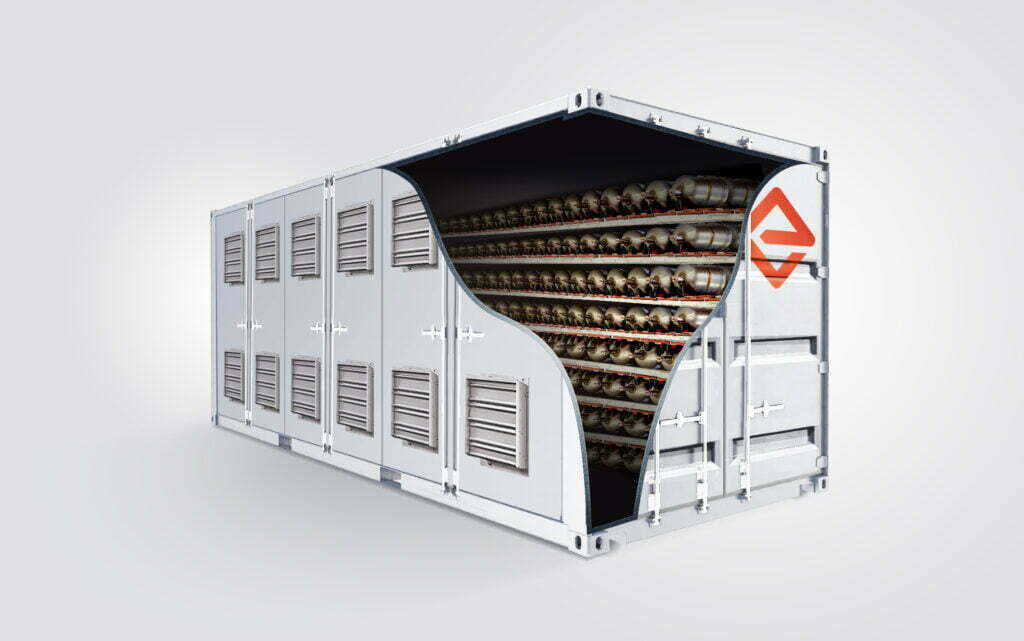Image: FREYR Battery.
Battery manufacturing startup FREYR Battery has signed a series of agreements that bring its plans for gigafactories in Europe and later the US closer to fruition.
Norway-headquartered FREYR Battery is targeting 50GWh of annual lithium iron phosphate (LFP) battery manufacturing capacity by 2025 and quadruple that by 2030, with its first facility set for construction in the town of Mo I Rana in its home country.
The company is one of dozens developing and constructing very large battery manufacturing plants around the world, with plans to also expand into the US, as well as to build another northern European plant in Finland.
However, it is one of the few, along with the likes of fellow Scandinavian startup Northvolt and China’s CATL – the world’s biggest lithium battery manufacturer – that have said production capacity will be set aside for stationary energy storage systems (ESS) as well as for the electric vehicle (EV) sector.
In an interview with Energy-Storage.news a few months ago, CEO Tom Einar Jensen told the site that this could equate to as much as half of total production capacity by 2030. The company has already signed multi-year off-taker deals with companies in the ESS space.
These include publicly announced deals with Honeywell for 19GWh of batteries, Powin Energy for 28.5GWh over six years and, most recently, Nidec ASI for 38GWh of supply by 2030 that includes an option to upscale to 50GWh.
This week, FREYR announced that it has signed a cathode supply deal with Taiwan-headquartered LPF cathode maker Aleees.
FREYR will get licensing to produce and sell LFP cathode material based on Aleees’ technology, while the Taiwanese company’s techniques and know-how will be leveraged in the construction of FREYR production facilities. Aleees will also provide services and support to FREYR on an ongoing basis.
FREYR’s Mo i Rana gigafactory complex, called Giga Arctic, will be the first beneficiary of the cathode material agreement, but FREYR said some volumes could be deployed for its US factories too.
The battery manufacturer plans to build an LFP cathode plant to feed Giga Arctic by 2024, and believes that it is important to establish a localised, low carbon production and supply value chain in the Nordic region, the company said. FREYR has signed a renewable energy supply deal for Giga Arctic with Statkraft.
Notably, Aleees is also a supplier already of cathode material to 24M, the US battery tech startup which has developed a manufacturing platform for what it calls ‘Semi-Solid’ lithium batteries, with thicker electrodes than other devices. That design means batteries could be produced more cheaply and quickly, 24M has claimed, and FREYR is one of its partners too.
The agreement with Aleees follows a process of negotiation that began earlier this year, FREYR CEO Jensen said.
“With the licensing agreement now signed, I’m pleased to say that we are in a solid position to keep momentum on our journey to localise and decarbonise battery cell production and their supply chains in the Nordic region. LFP cathode materials comprise 40% or more of the cost of a battery cell and currently account for more than 45% of the projected full-cycle supply chain carbon footprint of cells.”
In September, the manufacturer signed and announced a few other key deals.
Norwegian project developer and general contractor HENT AS was announced as planner, project manager and construction partner for the 120,000 square-metre Giga Arctic factory complex towards the end of last month.
A couple of weeks prior, UK company Mpac Group was contracted to supply automated casting and unit cell assembly equipment, with Mpac a pre-qualified vendor to 24M, while a few days before that, Italian industrial automation company NTE Process agreed to supply an integrated drying and power-handling system to Giga Arctic.
FREYR took the investment decision to proceed with the Giga Arctic factory project a few months ago and anticipates the start of production in the first half of 2024, slightly later than an originally announced H2 2023 start date.
Continue reading










